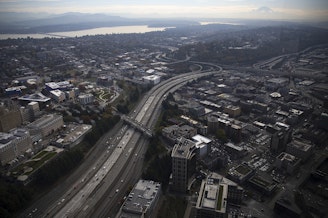The Fed already had a tough inflation fight. Now, it must deal with banks collapsing
The Federal Reserve's fight against inflation just got harder.
The high-profile collapse of two regional banks in recent days has sparked new fears about the country's banking system and raised questions about how much higher the Fed should push interest rates in its effort to curb prices.
Data released Tuesday showed inflation continues to ease, but prices are still climbing at a rapid rate.
Consumer prices in February were 6% higher than a year ago, according to the report from the Labor Department. That's down from January, when the annual inflation rate was 6.4%, but it's still much higher than the Fed's 2% target.
Prices rose 0.5% between January and February, with rising costs of rent, food, furniture and airfare partially offset by falling prices for natural gas and used cars.
Sponsored
Last week, Fed chairman Jerome Powell warned the central bank might have to raise interest rates higher and more quickly in order to bring prices under control.
"Although inflation has been moderating in recent months, the process of getting inflation back down to 2% has a long way to go and is likely to be bumpy," Powell told a Senate committee.
Since that testimony, however, the failures of Silicon Valley Bank in California and Signature Bank in New York have added new bumps in the road. Both lenders were shut down by regulators and the FDIC had to step in to protect depositors.
Stocks of other regional banks have continued to slump, despite emergency actions by the federal government to prevent a wider bank run. On Monday, Moody's bond rating agency put half a dozen other banks under review for possible downgrades.
The Fed has a tough decision coming up
Sponsored
Analysts say the resulting uncertainty may prompt the Fed to be more cautious about raising interest rates when policymakers meet next week.
Before the bank failures, the Fed was widely expected to raise its benchmark rate by at least a quarter percentage point and possibly half a point at that meeting.
Betting markets are now leaning towards a smaller increase and some expect the Fed to skip a rate hike altogether.
"The Fed may have more than inflation on its mind at the upcoming confab, most notably the prospect that its actions could heighten the threat of a financial crisis," said Bob Schwartz, senior economist at Oxford Economics.
The Fed's rate hikes are having a widening impact
Sponsored
The central bank has raised interest rates aggressively over the last year in an effort to tamp down demand and lower inflation. Those higher rates make it more expensive to get a mortgage or carry a balance on a credit card. They also may have contributed to the downfall of Silicon Valley Bank.
The California-based bank was heavily invested in government bonds, which have fallen in value because of the Fed's rate hikes.
The bank was forced to sell some of its bonds at fire-sale prices in order to cover rising withdrawals from its tech-industry customers.
When the bank announced last week that it lost $1.8 billion on bond sales, the news spooked other Silicon Valley customers — and panicked depositors raced to pull their money out, sparking a classic run on the bank.
Over the weekend, the Fed announced a new lending facility designed to shore up confidence in the banking system. It allows banks to borrow against their bonds at face value to cover withdrawals, so they don't have to sell bonds at a loss.
Sponsored
"Things have moved so much in not even the past week — just the last four or five days," said Michael Pugliese, a senior economist at Wells Fargo. "So we'll see how financial markets and the financial system more broadly react and take the medicine that's been announced."
But the Fed still needs to be careful about inflation
One of the Fed's primary roles is ensuring stability of the banking system. That can complicate its effort to fight inflation, at a time when the economy is sending mixed signals.
The monthly jobs report last week showed U.S. employers added a robust 311,000 jobs in February. Wage growth slowed, however, and more than 400,000 people entered the workforce, which could reduce inflationary pressure.
The consumer price index is another key inflation measure the Fed is watching. But Pugliese thinks it may be overshadowed at next week's meeting by worries about the nation's banks.
Sponsored
"I don't think the CPI is going to be the determinant of whether or not the Fed hikes [interest rates] in March," Pugliese said. "I think that's going to be determined far more by how the financial markets and the financial system does or does not stabilize." [Copyright 2023 NPR]


